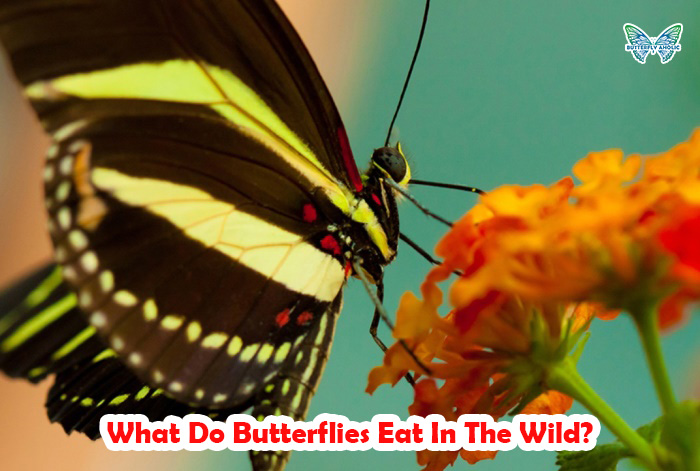What Do Butterflies Eat In The Wild?
Have you ever wondered what butterflies eat to survive and reproduce? Most of us have mainly seen butterflies on flowers only because nectar is the primary source of food for them.
The liquid form of nectar is compatible with the structure of butterflies’ tubular mouths, or proboscis if you prefer to use a professional term!
With this special proboscis, butterflies can stick their mouths deep inside a flower and suck the lovely treat into their bodies. The proboscises will curl up when they are not eating, and they absolutely don’t ever chew!
What you will learn after reading this article:
- The main food of butterflies.
- Differences in eating habits of male vs female butterflies.
- Special butterflies with their unusual food.
- Butterflies food in winter.
What Do Butterflies Eat Other Than Nectar?
Although nectar is the primary and most favorable food for butterflies, these beautiful little guys can also consume different kinds of food at different stages of their lives.
Furthermore, these extra resources vary across the butterfly species we are discussing, too.
And it also depends on the habitat of the butterfly itself. In the rainforest, the number of choices and supplies will certainly dominate what we can find in the desert.
For example, have you ever seen butterflies feeding off fruits instead of flowers?
As strange as it might sound, fruits are the most common alternative food source that can sustain butterflies if nectar isn’t available.
Ripe fruits will soften and produce more juice, so the butterfly can simply wield its proboscis and drink up.
But butterflies can consume the most unimaginable types of food as well, whether it is for their nourishment or their mating season. You would love to stay with us for the big revelation!
Love Butterflies, check more: Butterfly Clothings & Butterfly Accessories
Male vs Female Butterfly Eating Habit
The difference between them only starts to show when they go into the mating cycle. During this time, the female will need to find plants to host and lay eggs and hence have less time to find food.
To provide the female butterfly with sufficient nutrients as well as more time to spend on the most important duty, the male will prepare a bag containing the necessary substances for her. Their eating habits go two separate routes here.
There are certain flowers and plants not appeal to female butterflies, but the males need precursory compounds from these plants to produce the crucial pheromones and entice a mate. The odor a male radiates will be the determining factor as to whether he is chosen or not.
Butterflies with Unusual Food
So what do butterflies eat other than flower nectar or juice from fruits, which cannot give them the necessary minerals or ions that all living creatures need?
Male butterflies are usually the ones conducting strange diets, and it is merely for the sake of their mates!
As we have explained above, if the males provide enough nutrients, the females can focus on laying healthy eggs and not have their attention divided.
Tree Sap
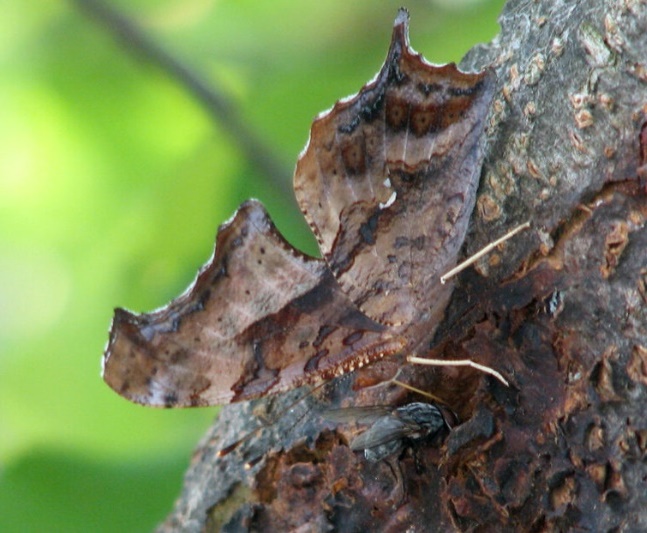
In most trees, there are cells responsible for transporting a fluid called sap throughout the trees and nurturing all parts with vital minerals, sugar, and nutrients.
The pressure coming from within the tree combined with built-up carbon dioxide causes the outer shells to crack. The sap leaking from these openings can be quite attractive to butterflies.
If you venture into the woods, you can easily spot your favorite large and brightly colored butterflies (signature of the Nymphalidae family) perching on the tree bark and enjoying a meal.
Many people utilize tree sap to lure more butterflies into their gardens, too.
Pollen
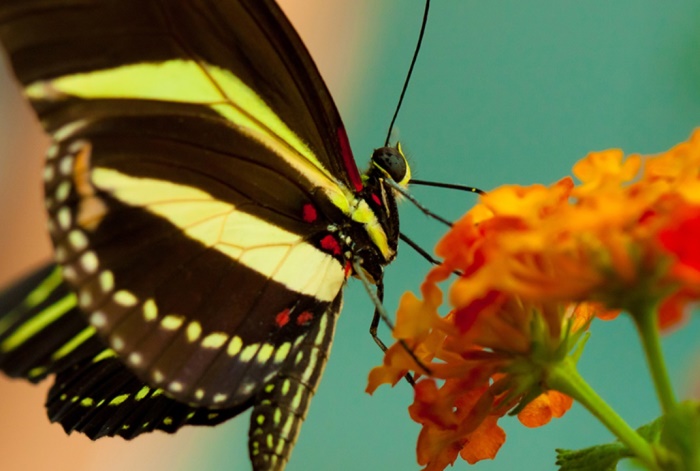
As we know, radiant flowers easily attract butterflies. While butterflies drink nectar from the flowers, the pollen inevitably gets to them. This means they don’t actively seek pollen for food.
Longwing butterflies with notorious zebra patterns can turn pollen into a liquid with unique components in their saliva. It easily gets into their special system before contributing to the making of a defensive poison.
Insects
Most of us grew up believing that all butterflies are not carnivorous and that meat is the last thing to appear in their diet. However, the Harvester butterfly is the only exception.
From caterpillars to adults, the Harvesters mainly feast on wooly aphids and sometimes use the remains to disguise and hide themselves from the ants guarding these aphids for honeydew.
Due to their different diet compared to other butterfly species, the Harvesters are not your regular visitors. You must be very lucky to run into one!
Carrion
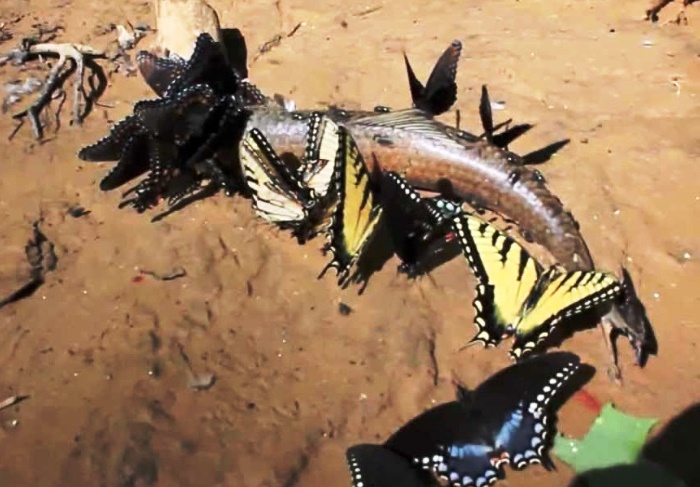
Carrion is the term for decaying corpses of animals. So if you see a beautiful clearwing butterfly eating carrion for the very first time, it might be quite shocking.
Upon researching the topic, we figured out that the butterflies were looking for ammonium ions, amino acids, and mineral salts that are not present in fruits.
Also, the males are more inclined to do this behavior, yet the females will benefit from it because these nutrients will be transferred to them during the mating process.
Wet Soil
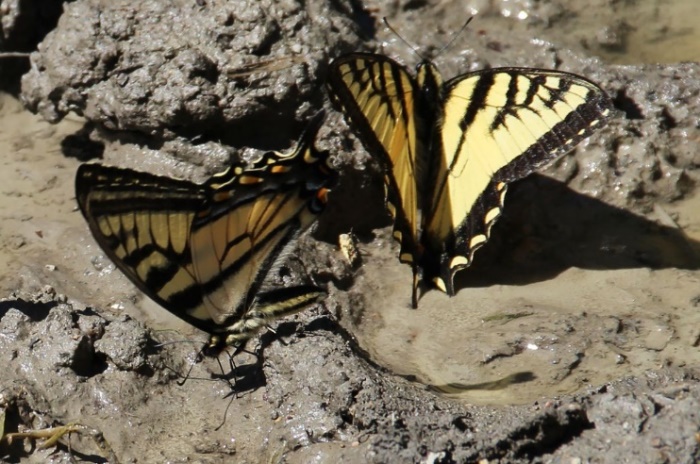
Another source of minerals and salts for butterflies is wet soil. The habit belongs mostly to the Lepidoptera family, which you can detect from triangular membranous wings and scaly bodies.
More interestingly, male butterflies are more often observed committing to such a routine, and scientists named it “mud-puddling” or “puddling” for short.
You can even find a swarm of them during reproduction times as they also need salts and minerals.
Dung, Animal Poop
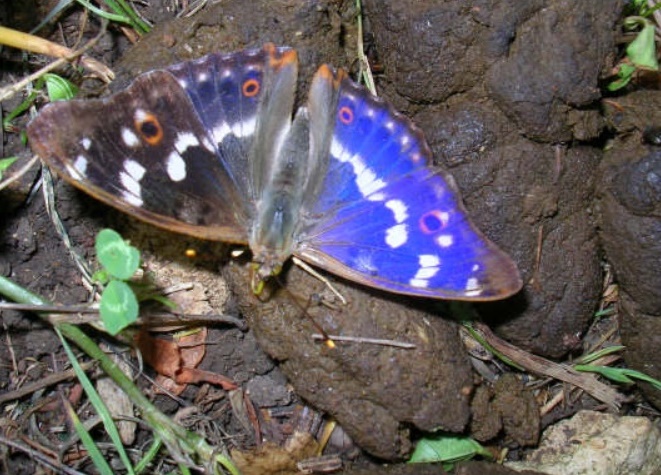
Like soil and carrion, dung is an additional source of essential substances for butterflies when the mating season arrives and they need the nutrients to sustain and reproduce.
This behavior can be seen in Lepidoptera butterflies sometimes and very often in other kinds of insects. A fact for us all is the species feeding off dung (and carrion) lean more toward ammonium, while the others are for sodium.
Blood, Tear
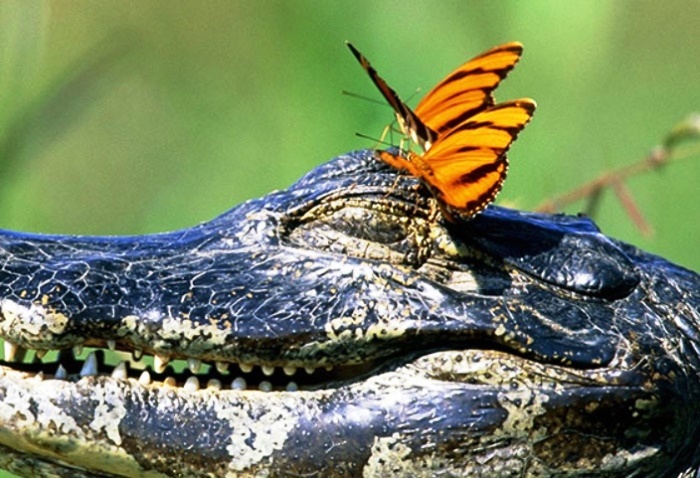
You can imagine if a butterfly species prefers sodium, they will go for something with a salted taste.
Here’s the surprise: Tears are a good supply of salts for them too, and blood can also give them necessary components.
The Calpinae family has been reported with this tear-drinking habit and they often obtain tears from roosting birds with eyes shut, while the genus Calyptra is labeled as “vampires” for sucking blood from animals and humans.
Human Urine
A very limited number of species in the Lepidoptera family are attracted to urine for both ammonium and sodium ions. Scientists believe these butterflies might also have a thing for nitrogen-related chemicals.
What Do Butterflies Eat In Winter?
Butterflies are not one of the animals thriving in winter. They often go into hibernation.
Most of the time, they will pull through the cold and harsh season as pupa, caterpillars, or eggs, though the mature butterflies still rely on food in the wild.
- Nectar: Flowers bloom in cold weather and butterflies feed off them to survive. The most commonly seen flowers that butterflies favor are honeysuckle, jasmine, or heath.
- Fruits: If flowers are available, so are fruits. Butterflies can enjoy grapes, apples, or pears that are not harvested. It is even better if the fruits are overripe.
- Tree sap: Wounded trees will ooze out sap in abundance, and the energy it provides is valuable to our winged beauties.
- Honeydew: Some insects suck sap and excrete honeydew, the leftovers of which are beneficial for butterflies.
After the harsh winter, most butterflies will enter adulthood. Food sources are widely available in spring and early summer, yet the aforementioned supplies are all they have to get through cold days.
When autumn approaches its end, food becomes scarce again, with flowers withering and fruits losing their prime condition. And another cycle of survival kicks in for the butterflies.
To get better access to the food sources, they will have to incorporate certain strategies:
- Hibernate in leaf litter or underground or simply reduce their activeness.
- Migrate to another region with more favorable weather conditions.
- Roost in larger groups to protect and keep all individuals warm.
The Takeaways
While nectar remains what butterflies eat most often and always seek after, they have surprisingly many alternative and additional sources to preserve decent nourishment and survival.
If you want to attract more butterflies to your garden, for example, make sure to have a balance between their nectar-feeding and mud-puddling behavior!

